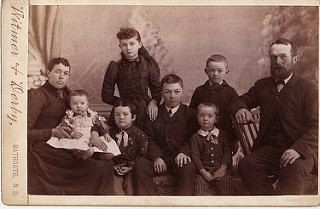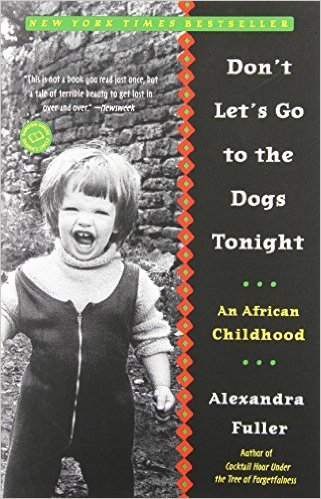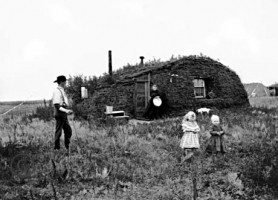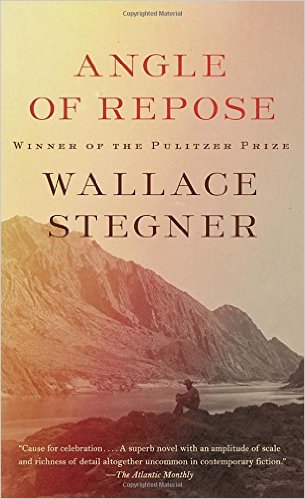The impulse to write a memoir, family genealogy, or work of fiction often begins when we open a family album. There’s the guilt factor, a sense that we owe our forebears a shot at having their stories told before those stories are swallowed by the well of history. When it comes right down to it, who’s going to want all those photographs of our grandparents and great-grandparents? What will our children, raised in the Instagram age, make of the stiff postures and posed portraits, the sepia tones and formal attire? And yet we know these images are important. We know in our hearts that the lives buried in these studio portraits or box-camera black-and-whites contain not just faces the we recognize as our own, but also the stories and wisdom of the loved ones who made us who we are.

With the help of two of my sons, I spent a day during the Thanksgiving vacation going through the bags and bags of unsorted photographs. A reader also contacted me and said she was going through photos and old letters, attempting to do some writing about them, but that the writing was proving harder than she’d imagined. Here are my thoughts on ways those old photographs can be mined for their riches.
Who Is Your Audience?
The first question to ask is this: For whom am I writing? If your answer is “to leave a legacy for my family,” your goal may be easier. Family members are intrinsically interested in stories about the family tree. Well, maybe the young ones aren’t, but they will be nearer the end of life. At that point many folks are curious about the roots and branches of the family tree, and that’s why sites like Ancestry.com have so many sleuths mining their files. Genealogy, old photos, and old letters capture the world as we knew it in our childhoods, and if we wish it to, this fragile documentation can serve as a springboard for our imaginations. Our family history can blossom into a memoir, local history, or work of fiction.
Apart from immediate family, your goal might be to reach a wider audience, to write a book worthy of occupying a library shelf. If you can refine your thoughts about audience further, you can focus your writing so that it will have an impact on readers outside your immediate circle. Is the book you’re envisioning about pioneers in North Dakota? If so, your book might stand alongside other books featured in the Read North Dakota library programs. Not all of these found a wide readership, but that doesn’t matter. What matters is that the subject grabs you and that you’re going to try your best to do it justice.
Can You Narrow Your Story To A Single Focus?
This is about the years when… or, This is about the time our family had to move out to Uncle Albert’s farm because Dad lost his grocery store… or, This is about the time a little girl set her dress on fire with a Fourth of July sparkler, an event that affected my grandfather, her doctor, for the rest of his life and that affected me because he thought I was so much like her.
Do you have a potential book about the Irish who raised greyhounds and raced them? (Listen up, Leslie W. I’m calling you out on this one. Write that book!) Maybe you’re plagued with self-doubt and playing one of those mind games all writers play. “Oh, who’d read that! It’s hardly worth my time. I should be writing something that will sell.”

Such thoughts might have been in the mind of Alexandra Fuller, author of Don’t Let’s Go to the Dogs Tonight, a memoir about her childhood in Rhodesia. Shona Patel, author of Teatime for the Firefly might also have stared at the pile of photographs that eventually formed the PowerPoint presentation she uses when talking about her successful debut novel.
My point is that if you envision writing just for your family, then your work won’t require the kind of structure that will be required of you if you want to reach a wider audience. If you’re hoping to touch the heart strings of that audience, then a story about growing up on a tea plantation in Assam or a story about a childhood in Rhodesia will be immensely interesting if the work itself has narrative focus.
What Is Narrative Focus?
It’s a term I just made up. Oops! Not true. I just went to Google and saw that a few other people have also used the idea of “narrative focus.” The term isn’t as important as the idea that all stories must be stories. They must have a point, not just trail off like the proverbial “shaggy dog” story.
It’s all well and good to use old photographs and letters, but if you’re wanting to reach readers who don’t know or care about your family, then you must try to extract meaning from this flotsam of lives, images, and experience. Otherwise, you may write your heart out, but you will wind up with the equivalent of a protracted diary. In a diary the meaning of recorded events is rarely clear. Not till you look back a decade hence will you understand the underlying themes and assumptions that guided your decisions.

Getting back to North Dakota pioneers, if you’re sorting through a pile of old photographs, you might look for themes that would touch on the universal. Pioneers might have an impulse to escape the known world and seek adventure. Your great grandfather might have been the youngest child with no prospects of a better life, except to join the land rush or the Gold Rush. Your grandmother might have had a better chance of meeting a husband if she agreed to be a mail order bride.
Whatever the lesson from those times gone by, you can extract meaning the very same way you would if flipping back through the pages of your teenage diary. “Gosh, I was boy crazy,” or “Heavens, my sister was right. I gave her a very hard time.”
If you intend to write a history of your family or a history of yourself, try to sense in your gut when a story begins to take hold of your feelings. Who is that baby in the dress? Why, it’s your grandfather? Tough. Indomitable. In a dress!
Look for contrasts. Look for the unexpected. Look for any situation you can dramatize. By that, I mean “a scene with dialogue that contains conflict.” Conflict will give your writing narrative focus. Someone will win and someone will lose. The reader’s eye will focus on that conflict to see who will come out a winner.
Photographs As Writing Prompts
A few years back author Robert Olen Butler used old postcards to jumpstart a book. I had the honor of editing one of his stories for the literary magazine StoryQuarterly. I’ve never seen a story come in so “clean,” meaning so free of grammatical mistakes and punctuation errors. However, to be totally honest, the excerpt we published read more like a vignette than an actual story. The characters grabbed me. The postcards were wonderful. But, something was missing. The story lacked narrative focus. It read more like a diary entry or a character study.

Butler’s wonderful short story collection, A Good Scent from a Strange Mountain, did have narrative focus. In each story the reader could discern the events that had caused the character to become a refugee. In each story a character won or lost. Perhaps the book found its audience because we Americans hungered to know more about the people whose lives had been altered by war. It’s possible that book would not have been so popular or relevant if it had appeared in 2014, prior to the waves of refugees that began flooding out of Africa, Syria, and Afghanistan.
Unfortunately, we can’t know what will make a book popular, nor can we know how long it will take to write a book. Go ahead and use those photos. Stare hard at them, and try to discern why you feel such urgency that you must tell the story behind them now. Has the way of life depicted in those images vanished or almost vanished? Are you the last person alive who remembers the details? The more you can think through these questions or discover the answers as you write, the stronger your story will be. A question agents will ask is this: “Why are we reading this now?”
The Frame Story
Before I leave this subject, I just want to give a nod to Wallace Stegner, author of one of my favorite novels, Angle of Repose. Stegner mined his grandmother’s letters to give authenticity to the life of a women and her husband living on the frontier.

But he did more than that. He invented a frame story with a modern protagonist who had an unbending nature. Lyman Ward urgently needed to learn lessons from the past so that he could find his way back to happiness. I can’t do better than the blurb for the book, so here goes:
Wallace Stegner’s Pultizer Prize-winning novel is a story of discovery—personal, historical, and geographical. Confined to a wheelchair, retired historian Lyman Ward sets out to write his grandparents’ remarkable story, chronicling their days spent carving civilization into the surface of America’s western frontier. But his research reveals even more about his own life than he’s willing to admit. What emerges is an enthralling portrait of four generations in the life of an American family.
Without the frame story, Angle of Repose would have fallen into the genre known today as historical fiction. But with the frame story surrounding the story from the past, readers have a reason to care. Make readers care, and you have a book that will have a life outside your immediate circle.
A term bandied about in writing workshops is that “something is at stake.” What’s at stake in Angle of Repose is Lyman Ward’s redemption. It’s Dickens’ story, “A Christmas Carol,” but with a modern twist.
When using the term “narrative focus,” I could have simply said, “A story needs a plot.” However, most of us, when culling through photos or looking back through journals, don’t immediately think, “What is the plot of this stretch of life?” The questions we might ask have more to do with what meaning of certain events or the scars they left. Our questions might have to do with how a landscape shaped the people who lived there, or how hard times made them people who endured.
Our great human endeavor is our ceaseless attempt to know “what it means”–this life with all its twists and turns, loves and disappointments. It is what drives us to tell the little stories we call gossip. It’s what causes us to sit around the table at Thanksgiving and summon up the moment when…Well, you get the idea. The endlessly fascinating story of our ongoing lives is what makes us so avid to conjure up the past.